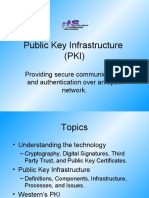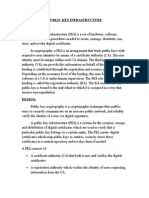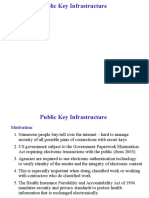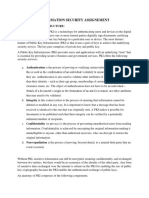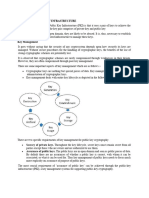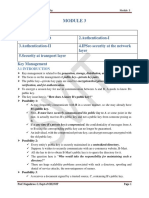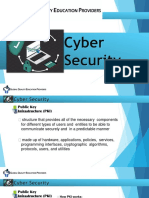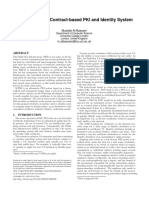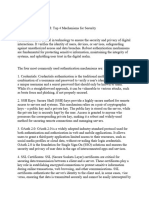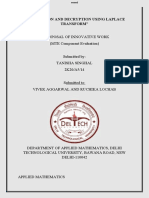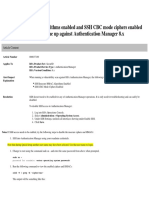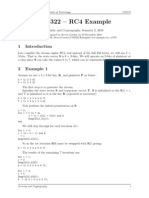0% found this document useful (0 votes)
13 views68 pagesModule 2
Public Key Infrastructure (PKI) is a framework that uses public key encryption to secure and authenticate digital communications, involving components such as Certification Authorities (CAs), Registration Authorities (RAs), and certificate repositories. PKI ensures the privacy of messages and verifies the identities of users and devices through digital certificates, which act as digital passports. It is widely used for securing web communications, email encryption, and IoT device security, among other applications.
Uploaded by
kamalnishant1223Copyright
© © All Rights Reserved
We take content rights seriously. If you suspect this is your content, claim it here.
Available Formats
Download as PPTX, PDF, TXT or read online on Scribd
0% found this document useful (0 votes)
13 views68 pagesModule 2
Public Key Infrastructure (PKI) is a framework that uses public key encryption to secure and authenticate digital communications, involving components such as Certification Authorities (CAs), Registration Authorities (RAs), and certificate repositories. PKI ensures the privacy of messages and verifies the identities of users and devices through digital certificates, which act as digital passports. It is widely used for securing web communications, email encryption, and IoT device security, among other applications.
Uploaded by
kamalnishant1223Copyright
© © All Rights Reserved
We take content rights seriously. If you suspect this is your content, claim it here.
Available Formats
Download as PPTX, PDF, TXT or read online on Scribd
/ 68









